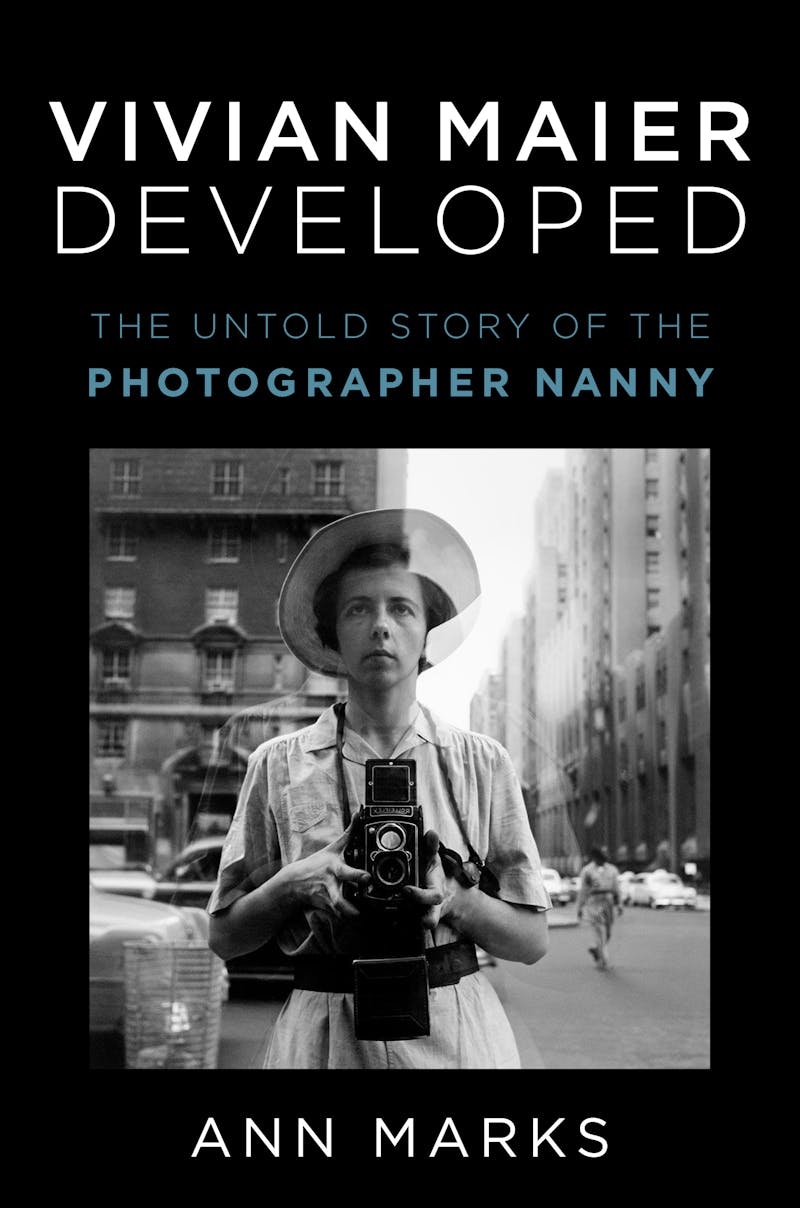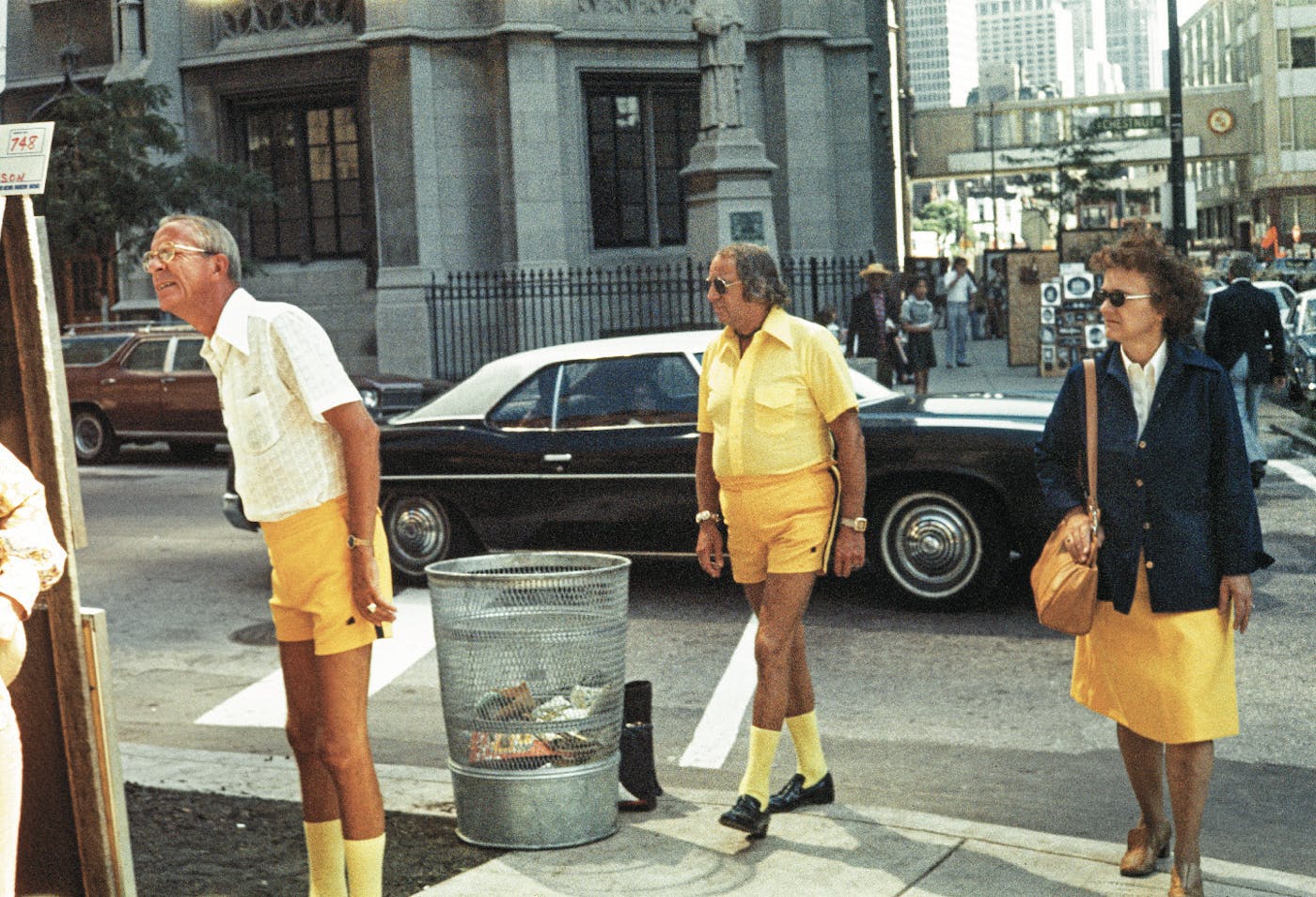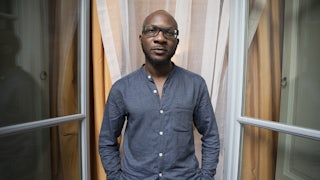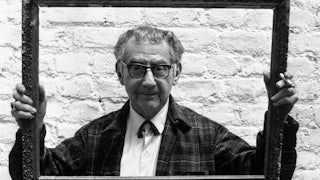Until 12 years ago, the photographer Vivian Maier was largely unknown. Though she shot incessantly from 1950 until about a decade before her death in 2009, she hid her pictures, literally locking them away. Often, she didn’t even bother to develop her rolls of film. She made money as a live-in nanny for families in New York and Chicago (briefly working for talk-show host Phil Donahue). As she got older, she rented storage lockers to house her overwhelming accumulation of books, magazines, newspapers, and other miscellany. The contents of those lockers were auctioned off in 2007 after she fell into arrears, which is how then-26-year-old John Maloof, a former art student, began purchasing the bulk of Maier’s archive: more than 140,000 images, most of them undeveloped and unprinted. A couple of years later, he uploaded some of the pictures to a street photography group on Flickr to immediate acclaim.

The images arrived already imbued with the aura of permanence. They sometimes evoke the wanderlust of Robert Frank’s photos, the wry self-deprecation of Lee Friedlander, or the grubbiness of Weegee, but they’re not derivative. Attentive to plaintive or absurd interludes in American life, primarily in New York City and Chicago, Maier made a piecemeal record of the sudden encounters and furtive gestures that turn any street into a guerrilla theater. She captured politicians on the campaign trail (Eisenhower, Kennedy, Nixon, LBJ); celebrities at premieres or out in the wild (Frank Sinatra, John Wayne, Greta Garbo, Audrey Hepburn); laborers and commuters; drunks, criminals, and down-and-outs; flaneurs and well-coiffed women in furs. She cataloged the textures and cast-offs of the urban environment: graffiti, fire escapes, signs, garbage, shadows, abandoned newspapers, half-demolished buildings. She easily switched between registers, from gentle wit—as in a 1975 photo of an elderly trio crossing a Chicago street in rhyming yellow apparel, or a 1960s photo of an imperious dog loitering beneath a pay phone—to almost ethnographic sincerity, as in her photos from a six-month solo voyage around the world in 1959. She often photographed children, particularly when they were aggrieved or lost in adultlike introspection. Above all, she made images of casual lyricism, as in her celebrated 1957 photo of a woman in white drifting through a dark Florida night. Maier’s are the kinds of photos about which you can only say: These are the real deal.
The fact that Maier was dead by the time she became famous has proved a boon for her posthumous renown; in her absence, the mysteries around the photographer-nanny became irresistible hooks for editors and curators. Maloof has been entrepreneurial about marketing her story. At least half a dozen monographs have appeared in the last decade, bolstered by numerous exhibitions and a steady chorus of press. In 2015, Finding Vivian Maier, a documentary that Maloof co-directed, was nominated for an Oscar and burnished Maier’s legend further. If she’s not quite in the canon yet, she’s certainly wait-listed.
Maier has also been the subject of two notable biographies. The first, Vivian Maier: A Photographer’s Life and Afterlife, by Pamela Bannos, was released in 2016. The second, Vivian Maier Developed: The Untold Story of the Photographer Nanny, by Ann Marks, exemplifies the allure and risks of writing about the enigmatic Maier. Marks, a former marketing executive at Dow Jones, began to dig into Maier’s life after watching Maloof’s film. She kicks off her biography with a brassy sales pitch: “By book’s end, key questions will be answered, including the one everyone asks: ‘Who was Vivian Maier, and why didn’t she share her photographs?’ Mystery solved.”
Well, maybe, maybe not. Treating Maier like a riddle makes for good jacket copy but can also turn her into a kind of Rorschach: One sees in her whatever the critical mode du jour demands. Circa 2011, she was “the best street photographer you’ve never heard of,” to quote Mother Jones. Today, she is an aerosol of neuroses and quirks, the lonely spinster who shampooed with vinegar and slathered Vaseline on her face; who wore men’s size 12 shoes; who dumped drippings from a roast pan into a glass and drank them. As Marks describes Maier’s eccentricities, she starts to play the amateur clinician, marshaling hypotheses from medical experts whose secondhand diagnoses foreground a story of trauma and unwitting victimhood. Commercial publishers require a takeaway, and so Maier becomes here something she would have detested: an inspiration.
Maier is a tricky subject for a biographer. She spent the 1960s, ’70s, and ’80s as a nanny, shuttling between families, or sometimes enjoying the reprieve of stable employment. (Her longest post was 11 years.) Whenever she moved, she locked her room and forbade anyone from entering. She seems not to have had romantic relationships, and had few personal ties. She left behind little by way of diaries or letters. Marks bases part of her portrait of Maier on the recollections of people who knew her glancingly, who remember her as an “extraterrestrial” figure. “She was … a very foreign presence in Highland Park,” recalls a friend of the Gensburgs, the family that employed Maier the longest. Marks’s physical rundown suggests why:
[Maier] dressed formally; her everyday attire consisted of a tailored suit or crisp Peter Pan–collared blouse paired with a calf-length skirt. She still wore old-fashioned rolled-down stockings, unable to make the transition to pantyhose. It was all covered up with oversize men’s coats in beiges and grays and topped with a trademark floppy hat.
Adding to the sense of foreignness was Maier’s brusqueness and penchant for French expressions. She presented a stern image that seemed at odds with the sensibility of her photos: The strict disciplinarian who insisted that her young charges address her as “Mademoiselle” and who sometimes slapped the children in her care also created a portfolio rife with humor and tenderness. More puzzling still, the woman who once traveled the world alone, who frankly espoused her opinions, and who seethed with ambition spent most of her adult life in the suburbs, anonymously plying her art. Marks begins her book with an epigraph of dichotomous terms acquaintances used to describe Maier, among them: Caring/Cold, Feminine/Masculine, Jovial/Cynical, Passionate/Frigid, Social/Solitary, Mary Poppins/Wicked Witch.
Despite her outward formality, a streak of playfulness runs through her photographs. In her more than 600 self-portraits, she finds ingenious ways to use mirrors and storefront windows to reflect her plain intensity, or else manifests as a kind of negative presence, as in more oblique shots of her shadow against sidewalks and walls. A self-portrait from the 1970s depicts her shadow against a laborer’s mud-spattered behind; another shows her shadow hovering amid a patch of buttercups (an image later used on a dress displayed in Bergdorf Goodman’s storefront). Other self-portraits are more direct: Maier reflected in a car mirror, her face neutral, aloof. According to Marks, Maier almost never let anyone else take her picture. How are we to understand these paradoxes?

In Marks’s telling, Maier inherited a split sense of self. Maier’s mother, Marie Jaussaud, was born in France in 1897, the illegitimate daughter of a teenage fling. “The baby girl was welcomed into a world where she officially didn’t exist,” Marks writes, noting that this shame “set into motion three generations of family dysfunction.” By 1919, Marie had immigrated to New York City, where she married an alcoholic steam engineer named Charles Maier. The couple gave birth to a son, Carl, in 1920, and to a daughter, Vivian, in 1926. The Maiers’ marriage was unhappy, and in 1932 Marie and Vivian fled to France, leaving young Carl behind. Mother and daughter returned to New York in 1938, where Maier eventually lodged with a widowed family friend, and found work in a doll factory (perhaps accounting for some later shots of dolls discarded in trash cans).
In 1950, Maier again returned to France. It was there she began taking photographs with a box camera: panoramas of the Alps, studies of the region’s working class, portraits of family. “It is clear from her early negatives and prints that Vivian possessed a great deal of confidence,” Marks writes. “She typically covered her subjects with just one shot, an approach that would become a trademark.” In the spring of 1951, Maier returned to New York, where she continued shooting, and even flirted with the idea of launching a picture postcard business. Most importantly, Maier revolutionized her practice by purchasing a Rolleiflex camera, which allowed her to literally shoot from the hip.
Marie almost entirely disappears from the biography after this point. “[She] stands out as disturbed and mentally unstable, even among a group of troubled individuals,” Marks writes of Maier’s mother. A doctor who examined the family records for this biography suggests that Marie had narcissistic personality disorder. She rarely held a steady job and was allergic to housework. She fabricated medical ailments, and in a letter to an officer about Carl’s care, she strikes a paranoid tone, lamenting that everyone had “plotted against” her. Although Marks acknowledges that it’s impossible to accurately diagnose Marie, this doesn’t stop her from premising the whole biography on such drive-by psychologizing. Indeed, the book is a case study for what responsible biographers shouldn’t do.
Some of Marks’s theories are more credible than others. It’s likely, for example, that Maier was a hoarder. By the time she died, she had crammed more than eight tons of possessions into storage lockers. (Her hoarding cost her at least one nanny job.) At other times, though, Marks’s hypotheses are purely speculative. “Physical and sexual abuse can contribute to trauma,” she writes, “and Vivian’s behavior suggests that she may have endured this type of exploitation.” The behavior in question—Maier’s distaste for physical intimacy, her fusty wardrobe, and her cautioning young girls against sitting on men’s laps—doesn’t strike me as compelling evidence of childhood sexual abuse so much as the traits of a reserved woman with old-fashioned notions of propriety. “[Maier’s] brother was definitively diagnosed with schizophrenia, and her mother almost certainly had a history of some sort of mental illness,” Marks writes. “Many felt Vivian’s grandfather Nicolas Baille may have also, based on his antisocial behavior and extreme paranoia.” (Marks doesn’t specify whom she means by “Many.”) She asks the same doctor who diagnosed Maier’s mother to take a crack at Maier herself. The verdict: Maier was perhaps a “classic case of schizoid disorder.”
Marks uses the fact of Carl Maier’s schizophrenia to prop up this diagnosis. One of the assets of her largely lackluster biography is the gumshoe work she does chasing down Carl’s records and filling in his story. (The book’s multiple appendixes, including one devoted to “genealogical tips,” suggests that building out a family tree is Marks’s real passion.) Carl was imprisoned at age 16 for tampering with the mail and forging a check. He joined the military but was dishonorably discharged for a drug-related offense. He bounced in and out of psychiatric hospitals as an adult and died of an aortic thrombosis at a rest home in 1977, at age 57. He and Maier had little contact with each other, although Marks portrays them as heirs to a common bloodline of mental illness. Marks takes Carl’s diagnosis at face value, despite how often the label schizophrenia was slapped onto criminalized bodies at mid-century, particularly among institutionalized drug users. Still, let’s grant that Carl had some kind of genetic psychological disturbance—what does that mean for Maier?
It means that her creativity, her art, is inextricable from mental illness. That’s a generic enough argument, but in Marks’s hands, it turns cloying. Her interpretations of Maier’s work sometimes take unfortunate cues from clinical analyses. She quotes a father-son duo of Freudian therapists who posit that “the negative themes that surface in Vivian’s portfolio—including death, violent crime, demolition, and garbage—represent subconscious reflections of her low self-esteem.” Name any worthwhile photographer—any worthwhile artist—and you’ll encounter “negative themes.” This is vapid psychoanalysis and even worse critical writing.
As I read, I was increasingly irritated by this reductive and patronizing portrayal of Maier. (This is underscored by how Marks refers to Maier as “Vivian.” “I use her first name throughout because this is how most people know and speak about her,” Marks writes by way of explanation. She doesn’t consider that Maier, who worked in a service capacity all of her life, was unlikely to be addressed by her surname.) “With immense strength of character and perseverance,” Marks writes, “Vivian developed compensatory qualities and coping mechanisms, like photography, to manage her mental health issues.” In Marks’s account, Maier is a mentally ill woman who took photos almost as a therapeutic tic rather than a full-fledged artist with (perhaps) a mental illness. Maier’s self-portraits, according to Marks, are simply ways to substantiate herself in the world—signposts of a woman who was forever unmoored. Even Maier’s prolificness is evidence of a compulsion, as if her taking pictures was of a piece with her hoarding of newspapers. Marks never considers that perhaps Maier just enjoyed being a photographer, and that the act of framing a shot was itself creatively fulfilling. Would anyone point to a writer’s pile of false starts and trashed drafts as signs of a mental disorder?
Just because Maier often didn’t develop her rolls of film and rarely produced prints (and almost never exhibited them) doesn’t mean that her creative practice was somehow stunted or insular. That’s a careerist view of how a photographer should operate. Maier was undoubtedly a serious, dedicated, and consummate artist, largely self-taught, who honed her craft over decades. As Marks herself notes, Maier was more than a hobbyist, even from the beginning: “Altogether, the thousands of early images … confirm how intensely Vivian worked to master the basics of photography during her time in [France].” In New York, Maier sought out “colleagues to learn from, collaborate with, and engage in shoptalk.” She assiduously cropped images and experimented with color film. Even by the end of her career, Maier was known to leave precise instructions for the technicians entrusted with developing her images. But by pressing her into a queasy Hallmark narrative of a woman triumphing over her demons, Marks’s biography unintentionally undervalues Maier’s achievement. Photography wasn’t a “coping mechanism” but her life’s work.
“I’m sort of a spy,” Maier once told someone who asked about her profession. She was being cheeky, but the remark indicates how she saw herself: as a witness and a trespasser, a woman interested in momentary revelations of truth, no matter how painful or embarrassing or fraught. Her photographs represent a vast album of American street life across five decades, and, parallel to that, a chronicle of Maier’s own place in that landscape. It’s a body of work that’s simultaneously objective and subjective, in which Maier is both the author and a recurrent, ambiguous protagonist who lends the entire undertaking a kind of self-referential weight. Contrary to Marks’s argument, I see no meaningful distinction between the photographer and the world in Maier’s work. She doesn’t appear to me as an isolated woman trying to fix her coordinates in a universe from which she was somehow estranged. She looks, instead, like a woman who was profoundly and intuitively present.
If you read enough biographies, you realize that the genre has a fatal flaw, a system error: Every person is unknowable, not least of all to themselves. There is, in everyone, some small cinder of truth that never sees the light of day. Biographers pretend that this cinder can be revealed, and that order can be imposed upon an unruly life. That’s a lie. Ann Marks hasn’t solved the mystery of Maier—why would we want her to? The photographer’s mystery remains intact, suffusing the thousands of indelible images she left behind in those storage lockers. It’s better to look there for the truth of her life, in those pictures of the world that she put away, as if she saw, and understood, what the rest of us never would.






